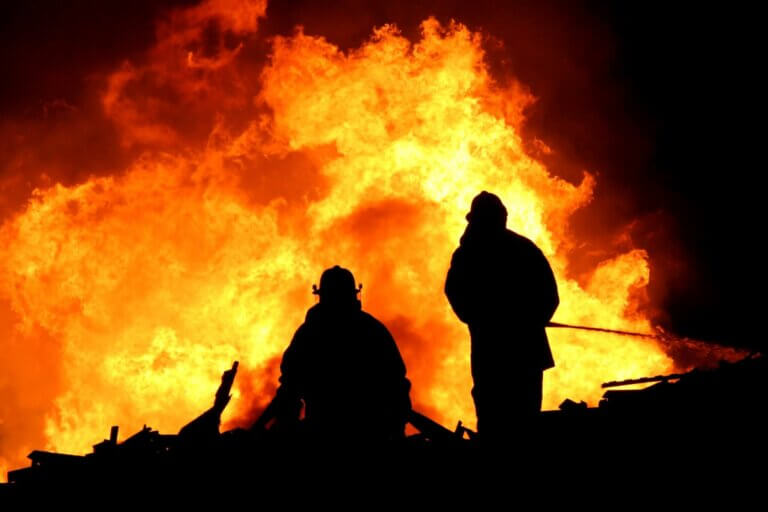The “incidents” that can occur in a company should not be confused with “accidents”. Both events are unexpected, but point to completely different situations. Therefore, every security professional or leader must know very well how to report them accurately and meticulously, in order to discover the root cause, and draw up an effective prevention strategy.
The operational efficiency of any company or organization does not only lie in its productive capacity or in the skills of its staff. It also relies on the ability of its leaders and teams to optimize “incident management.”
At this point, it is important to establish a first precision, because although the term “incident” is often confused and even used as a synonym for “accident”, it refers to a completely different situation.
Both events are unexpected situations, but an incident may or may not lead to serious or critical damage or injury. On the other hand, an accident will always have negative consequences such as injuries, minor or major occupational illnesses, accidents, and damage to public or private property, among other possible direct and indirect implications.
TYPES OF INCIDENTS
An incident can be any event, situation or condition that interrupts the normal work of a company or organization and at the same time generates dangers and potential risks. These can affect both workers, as well as processes, systems and general operation.
In the same way, an incident can also cause alarm in the public opinion, or attract the attention of the media (depending on the size of the company, the material or physical impact of the event, and its consequences).
Some of the most common examples of incidents are:
– Accident or injury to one or more of the workers.
– Damage to property and / or infrastructure.
– Vehicular accident.
– Security incident.
– Injury resulting from loss of work time.
– Environmental accident.
– Fire incident.
– Imminent risk of failure, resolved in time.
STEPS TO WRITING A GOOD REPORT
In addition to establishing the essential differences between the two concepts, it is important to have a precise and systematic methodology that allows the recording and reporting of incidents that occur in any company. In order to accomplish this objective the company requires a complete list, which details all the necessary data (such as physical location, time, type of incident and consequences, among others) so that the final report will be accurate, real and thorough.
Working with this level of systematization will provide an essential document, which will help the entire organization to carry out efficient investigations, and to regard the origin of the incident. Likewise, it will be possible to analyze the event more accurately, obtain better conclusions and design a more efficient preventive planning.
In this regard, international security experts establish four precise steps to write a good incident report:
1. Total clarity about what information should be collect:
Knowing properly the information to include in the report helps you collect data more efficiently. This requires a complete checklist, which provides a valuable guide to avoid missing important details. Specially, when you need to collect the information and send the report as soon as possible.
2. Gather the most accurate and factual data:
An incident report is a real and sensitive document. Therefore, you must provide concrete evidence, detailing relevant facts accurately and reliably. Whoever writes it must provide the most accurate and objective information possible, avoiding issuing opinions, biased statements, and any information that does not contribute to clarifying the events.
3. Provide as much evidence as possible:
We can complement the certainty and veracity in the description of the facts with photos, illustrations, diagrams or even video records. All of this will strengthen the validity of the report. It will also help support the statements of those involved in the event.
4. Obtain signatures before completing:
The testimonies of those involved are also vital to certify the validity of the report. Therefore, it is absolutely necessary that these witnesses confirm, with their signature, the full accuracy of the report on the incident.
PRACTICAL EXAMPLES
Regardless of seemingly minor or unimportant situations, all incidents that occur in the workplace must be immediately reported and documented. This ensures that their details are duly recorded, and they could be also used in the corresponding preventive strategic planning of the company or organization.
This allows more speed to help affected people, and also helps the company determine the most pertinent subsequent actions, such as transfer to healthcare centers, necessary medical treatments, security measures that must be implemented or refined, and update time records lost.
For an efficient application of this task, experts recommend two specific types of reports that are characterized by their meticulousness and accuracy:
A. List-type reports
This methodology implies working on an exhaustive collection of facts, people directly or indirectly involved, actions and consequences of each particular incident, among other variables.
The result is a list that must always include the following:
– Type of incident
– Location
– Names of affected persons
– Immediate supervisor
– Declaration of the affected persons
– Witnesses
– Context of the event
– Movement of people affected during the incident
– Injuries, severity and treatment
– Photos and other graphic testimonies
– Identified hazards
– Root cause of the event
B. Narrative reports
Another valid option for delivering a detailed and accurate incident report is the systematic narration of the events. An example of this style is as follows:
“On Tuesday, October 12, 2020 at 9:30 AM, in the central dispatch facilities of Lightning Transport Company, located at Dream Avenue 4544, Lo Valdés, one of the warehouse employees (Juan Pérez) slipped while moving a 35 kg piece of equipment, to a nearby loading platform. After conducting a detailed analysis, we estimated that the root cause of the incident was the wet floor of the place, because the leaks of a water tank that is in the same place. In addition, we should consider the fact that Juan has poor near vision, and he carried out the transfer of the piece without noticing that there was water on the floor”.
“When Juan fell, his colleague, Pedro, who was about to enter the warehouse, heard a noise that motivated him to verify what happened. Realizing the situation, Pedro quickly ran to help Juan. After reporting the incident to the supervisor on duty, Mary Contreras, they decided to call the Lo Valdés hospital to request an ambulance. In the meantime, Juan stated that his head hit the ground hard when he fell, which caused severe cranial pain, although there was no blood in his wounds”.
“At 11:00 AM Juan was admitted to the Emergency Service of the General Hospital of Lo Valdés, where the specialists on duty confirmed a Cranial Brain Trauma, with a fracture of the occipital bone. Therefore, Juan must be on medical leave and not working for 2 months. “
“The general supervisor of the winery, Eduardo Espinoza, is currently working with the person in charge of the Hygiene and Safety Committee, Luis Yáñez, and the Safety coordinator, Emilio Silva, to evaluate the condition of the floor, as well as the location and condition of the water tanks that caused the accident, and the state of the warehouse lighting system. In addition, an ophthalmological medical examination will be carried out on all the personnel of “Lightning Transport Company”.
Both examples are valid for making a detailed, accurate and meticulous report of each incident. Therefore, the recommendation is to work with the format that is most comfortable and agile for whoever is in charge of carrying out this task.






